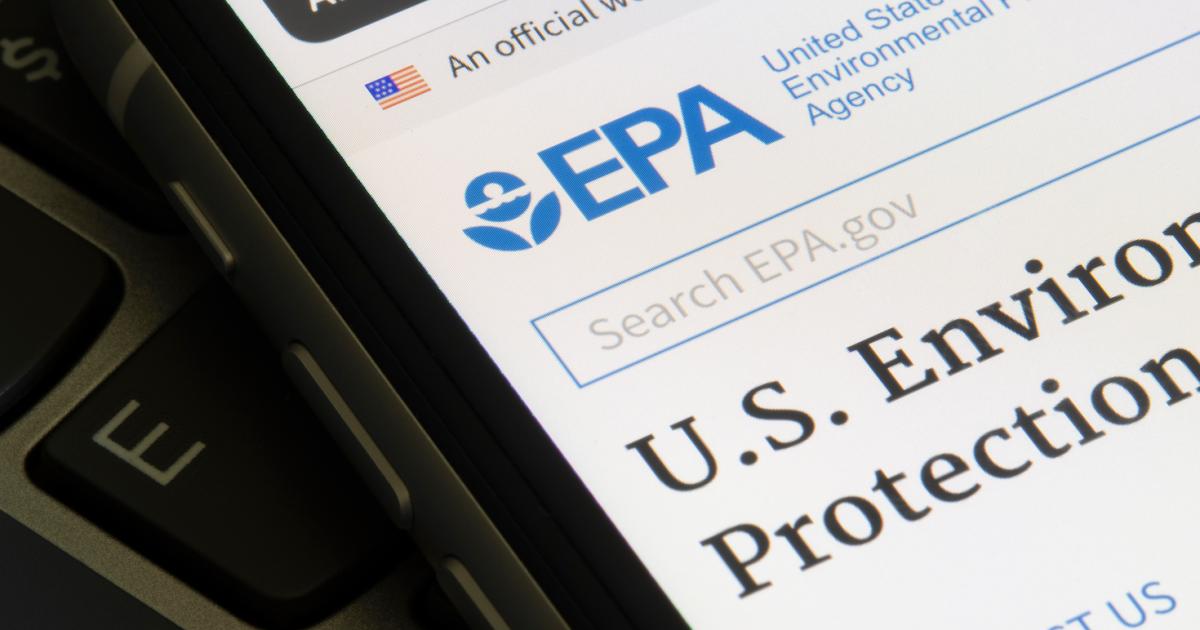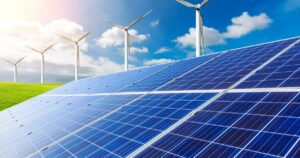
The U.S. Environmental Protection Agency has begun churning out proposed regulations during the past several months that reverse Trump-era policies and place its own imprimatur on curbing future pollution.
Two recent proposals that aim at significantly reducing the emissions of greenhouse gases (GHG) from power plants and internal combustion engines reflect EPA’s leadership and limitations. Each set of proposed controls uses very different scientific and policy tools, faces contrasting economic challenges and has a different probability of success. Taken together, the two proposed regulations illustrate the extent to which the EPA is navigating increasingly treacherous legal and political waters amid an intensifying climate crisis.
Regulating greenhouse gases from fossil fuel-fired power plants
In issuing the proposed regulations in the Federal Register on May 23, the EPA builds upon significant progress achieved in the power sector. Since 2005, utilities have reduced their carbon dioxide releases by 36 percent. The announced new rules plan for reducing 617 million metric tons of CO2 by 2042.
An earlier attempt by President Barack Obama’s administration to regulate power sector GHGs was ruled invalid by the U.S. Supreme Court in a bizarre, judge-made decision that ignored the fact that the EPA never issued a formal, final regulation. This time, the EPA under President Joe Biden hopes to sidestep the legal crocodiles by applying its regulation to emissions that occur within a plant’s fence line rather than authorize fuel switching across many plants (the Obama approach).
The EPA further states it will not require any specific kind of technology or fuel to achieve the regulations’ objectives. So far, so good. BUT … the proposed rules recommend strict GHG emission limits that literally would force power companies to rely upon technologies that have not been proven to work at scale, such as carbon capture and sequestration/storage (CCS) and “clean hydrogen,” a term used to describe hydrogen produced using renewable energy or from fossil fuels combined with carbon capture.
The EPA’s proposed policies for controlling GHG emissions from power plants and internal combustion engines largely reflects a one-trick pony approach to policymaking that focuses upon command and control regulation at the end of the combustion process.
The EPA is relying upon economic incentives provided through Congressional clean energy investments that it believes will transform the marketplace and reduce technology costs. This “Field of Dreams” approach to regulatory technology — spend the money and the technology will come — is magical thinking at this stage of development of both CCS and low-carbon hydrogen options.
None of the nation’s 3,400 coal and gas-fired power plants use CCS at any level of scale, nor will federal tax credits cover the costs of capturing carbon from existing plants. A recent study by energy research firm Rhodium Group estimated that only about 20 gigawatts’ worth of coal and gas plants would likely rely upon CCS by 2035, a small percentage of the 700 gigawatts of power that these plants currently produce. Only one commercial power plant in North America, in Canada’s Saskatchewan province, currently operates with CCS, but it has been historically plagued by technical problems and cost overruns.
Analogous challenges face hydrogen-based technologies. A hydrogen-proposed substitution for coal and gas will require substantial quantities of hydrogen for power generation. And while a growing number of companies and entrepreneurs are working to develop “green” hydrogen (defined as hydrogen produced without reliance upon fossil fuel energy sources), the technology currently lacks operational scale or competitive economics. That leaves power companies with the options of generating electricity from solar, wind or batteries — all heavily subsidized through the Biden clean energy law. Even proponents of these technologies lack a consensus among themselves — or sufficient political clout in Congress — to agree upon a permitting strategy to expedite their adoption to meet market demand.
Putting the pedal to the metal for electric vehicles
In contrast to the technological uncertainties of the EPA’s power sector objectives, there is greater clarity in the agency’s proposal to significantly reduce greenhouse gas and other emissions from internal combustion engines (ICE). Under the rule announced May 5 in the Federal Register, the EPA calls for two-thirds of all new passenger vehicles sold in the U.S. to be electric by 2032, an increase from 5.8 percent today; gasoline-fueled vehicles would no longer be sold as soon as 2035. Unlike the use of CCS or hydrogen technologies in the power sector, there has been more than a decade of experience with electric vehicles in the world’s principal markets.
There should also be confidence that some issues that garner significant media attention and political concern — such as “range anxiety” (the ability to locate recharging stations during long journeys), battery costs and durability, and availability of precious metals — are on their way towards market-scale resolution.
Why, then, is there so much skepticism about the EPA’s GHG proposals for cars and trucks, even from people normally supportive of the Biden administration’s policies? Four issues highlight the hesitancy:
- Proposed ICE emission controls could be perceived as prodding market penetration of EVs too soon. The EPA is attempting to revamp within a decade an industry that contributes approximately $1 trillion in economic value to the U.S. each year, including manufacturing, service, supply chain, labor compensation, small business income and government tax revenues. For the rule to succeed, these and other factors have to align and be seamlessly executed. But many — including expansion of the electricity grid to sustain EV demand and more rapid permitting of energy technologies — are not keeping pace with market needs. According to a Lawrence Berkeley Laboratory assessment, four years are needed to add a wind or solar unit to the regional power grid, an increase of two years since 2017.
- Key Biden administration allies do not support the EPA’s pollution standards for cars and trucks. It’s difficult enough for the EPA to overcome legal and political challenges from its adversaries, but some of its core political supporters also oppose the rulemaking. “The EV transition is at serious risk of becoming a race to the bottom,” wrote the newly elected United Auto Workers (UAW) president to his members in April. The union, with an active membership of 400,000, is withholding its endorsement of Biden’s re-election pending resolution of its concerns over the fact that EVs will require less than half the workers needed to build internal combustion engine vehicles. The UAW concern is echoed by a number of Democratic politicians from industrial states, many of whom are up for reelection in 2024.
- Consumer purchases of EVs are by no means assured. Early adopters have provided some market pull to EV sales, but the vast majority of vehicle purchasers have yet to be engaged on whether to buy an EV. In a troubling recent data point, a study by S&P Global Mobility reports that Americans are keeping their combustion-engine vehicles even longer. The average age of U.S. cars and light trucks has increased to 12.5 years in 2022.
- Key sustainability issues get passed over in the EPA’s rulemaking. Future, unpleasant health and environmental surprises may be in store for the EPA and the public as the agency to date has chosen not to investigate myriad sustainability challenges facing the nascent EV industry. Those concerns include GHG and other emissions and water stress and contamination from mining rare minerals in the U.S. and abroad; worker and ecosystem exposures to newer pollution sources; health and environmental risks from transporting, storing and processing materials used in EV production; and pollution from EV vehicle operations. As the EPA’s sustainability toolkit continues to expand to include life cycle analysis and other methods, it should apply equally to internal combustion engine and electric vehicles to enable both regulators and consumers to make more informed choices.
The EPA’s proposed policies for controlling GHG emissions from power plants and internal combustion engines largely reflects a one-trick pony approach to policymaking that focuses upon command and control regulation at the end of the combustion process. Its proposals also seriously underestimate the length of time required to institute major technological adjustments to two of the country’s largest industrial sectors.
On fragile political ground, even with its own allies, the EPA (pushed by the White House staff) has placed its future ability to control GHGs in the crossfire of the nation’s political dysfunction. Failure in the courts or adverse public opinion would jeopardize longer-term responses to the climate crisis and blow a major hole in the Biden administration’s near-term climate goals.
- SEO Powered Content & PR Distribution. Get Amplified Today.
- PlatoAiStream. Web3 Data Intelligence. Knowledge Amplified. Access Here.
- Minting the Future w Adryenn Ashley. Access Here.
- Buy and Sell Shares in PRE-IPO Companies with PREIPO®. Access Here.
- Source: https://www.greenbiz.com/article/2-proposed-epa-rules-aim-significantly-reduce-emissions-power-plants-and-cars
- :has
- :is
- :not
- ][p
- $UP
- 000
- 12
- 20
- 2005
- 2017
- 2022
- 2024
- 23
- 7
- 8
- a
- ability
- About
- Achieve
- achieved
- across
- active
- add
- adjustments
- administration
- adopters
- Adoption
- adverse
- age
- agency
- aim
- align
- All
- also
- america
- Americans
- Amid
- among
- an
- analysis
- and
- announced
- Anxiety
- any
- Apply
- Applying
- approach
- approximately
- April
- ARE
- AS
- assured
- At
- attempting
- attention
- authorize
- auto
- availability
- average
- batteries
- battery
- BE
- becoming
- been
- begun
- believes
- Berkeley
- biden
- Biden Administration
- blow
- both
- Bottom
- build
- builds
- business
- but
- buy
- by
- Calls
- capture
- Capturing
- carbon
- carbon capture
- carbon dioxide
- cars
- chain
- challenges
- choices
- chosen
- clarity
- clean energy
- Climate
- climate crisis
- CNN
- co2
- Coal
- combined
- come
- commercial
- Companies
- Compensation
- competitive
- Concern
- Concerns
- confidence
- Congress
- Congressional
- Consensus
- Consumers
- continues
- contrast
- control
- controlling
- controls
- Core
- Cost
- Costs
- could
- country’s
- Court
- Courts
- cover
- Credits
- crisis
- crossfire
- Currently
- cycle
- data
- Date
- decade
- decision
- Demand
- democratic
- describe
- develop
- Development
- different
- difficult
- do
- dreams
- durability
- during
- each
- Earlier
- Early
- early adopters
- Economic
- economic value
- Economics
- ecosystem
- elected
- Electric
- electric vehicles
- electricity
- emission
- Emissions
- enable
- end
- energy
- engaged
- Engine
- Engines
- enough
- entrepreneurs
- environmental
- Environmental Protection Agency
- EPA
- equally
- estimated
- Ether (ETH)
- EV
- Even
- executed
- existing
- Expand
- expansion
- experience
- Face
- faces
- facing
- fact
- factors
- Failure
- far
- Federal
- field
- final
- Firm
- focuses
- For
- Force
- formal
- fossil
- Fossil fuel
- fossil fuels
- four
- from
- Fuel
- fuels
- further
- future
- GAS
- generating
- generation
- get
- GHG
- GHG emissions
- Global
- Goals
- good
- Government
- greater
- Green
- greenhouse gas
- Grid
- Ground
- Group
- Growing
- Half
- Have
- Health
- heavily
- hesitancy
- Highlight
- his
- Hole
- hopes
- House
- HTTPS
- hydrogen
- ICE
- in
- Incentives
- include
- Including
- Income
- Increase
- increased
- increasingly
- industrial
- industry
- informed
- Institute
- intensifying
- internal
- investigate
- Investments
- Issued
- issues
- issuing
- IT
- ITS
- Jeopardize
- Joe Biden
- Journeys
- jpg
- keeping
- Kind
- labor
- laboratory
- Lack
- largely
- largest
- Law
- Leadership
- Legal
- Length
- less
- Level
- Life
- light
- likely
- limitations
- limits
- Line
- Long
- longer
- low-carbon
- major
- Majority
- make
- manufacturing
- many
- Market
- marketplace
- Markets
- materials
- May..
- means
- Media
- Meet
- Members
- membership
- metal
- Metals
- methods
- metric
- million
- minerals
- Mining
- mobility
- money
- months
- more
- much
- nascent
- Nations
- navigating
- needed
- needs
- never
- New
- newly
- no
- normally
- North
- north america
- number
- Obama
- objectives
- of
- on
- ONE
- only
- operates
- operational
- Operations
- Opinion
- oppose
- Options
- or
- Other
- out
- over
- Overcome
- own
- Pace
- passed
- past
- pending
- penetration
- People
- perceived
- percent
- percentage
- Place
- plan
- plants
- plato
- Plato Data Intelligence
- PlatoData
- Point
- policies
- policy
- policymaking
- political
- Politicians
- Pollution
- Pony
- power
- Power grid
- power plants
- Precious
- Precious Metals
- president
- president joe biden
- Principal
- probability
- problems
- process
- processing
- produce
- Produced
- Production
- Progress
- proposal
- Proposals
- proposed
- protection
- proven
- provided
- public
- public opinion
- purchases
- pushed
- Race
- range
- rapid
- RARE
- rather
- recent
- recommend
- reduce
- Reduced
- reducing
- reflect
- reflects
- regional
- register
- Regulate
- Regulation
- regulations
- Regulators
- regulatory
- Regulatory Technology
- Releases
- reliance
- rely
- relying
- Renewable
- renewable energy
- require
- required
- research
- Resolution
- responses
- revenues
- reverse
- Rhodium
- Risk
- risks
- Rule
- ruled
- rules
- s
- S&P
- S&P Global
- sales
- Scale
- seamlessly
- sector
- Sectors
- serious
- service
- set
- several
- should
- significant
- significantly
- since
- Skepticism
- small
- small business
- So
- so Far
- solar
- sold
- some
- Soon
- Sources
- specific
- spend
- Staff
- Stage
- standards
- States
- Stations
- store
- Strategy
- stress
- strict
- Study
- substantial
- succeed
- success
- such
- sufficient
- supply
- supply chain
- support
- supporters
- supportive
- Supreme
- Supreme Court
- surprises
- Sustainability
- taken
- tax
- Technical
- technological
- Technologies
- Technology
- term
- than
- that
- The
- their
- themselves
- then
- There.
- These
- Thinking
- this
- those
- Through
- time
- to
- today
- together
- tons
- too
- toolkit
- tools
- towards
- Transform
- transition
- transporting
- Trillion
- troubling
- Trucks
- two
- two-thirds
- u.s.
- uncertainties
- under
- union
- unit
- United
- unlike
- upon
- use
- used
- uses
- using
- utilities
- value
- Vast
- vehicle
- Vehicles
- very
- was
- Water
- Waters
- Way..
- whether
- which
- while
- white
- White House
- will
- wind
- with
- within
- without
- Work
- worker
- workers
- working
- world’s
- worth
- would
- WSJ
- year
- years
- yet
- zephyrnet









